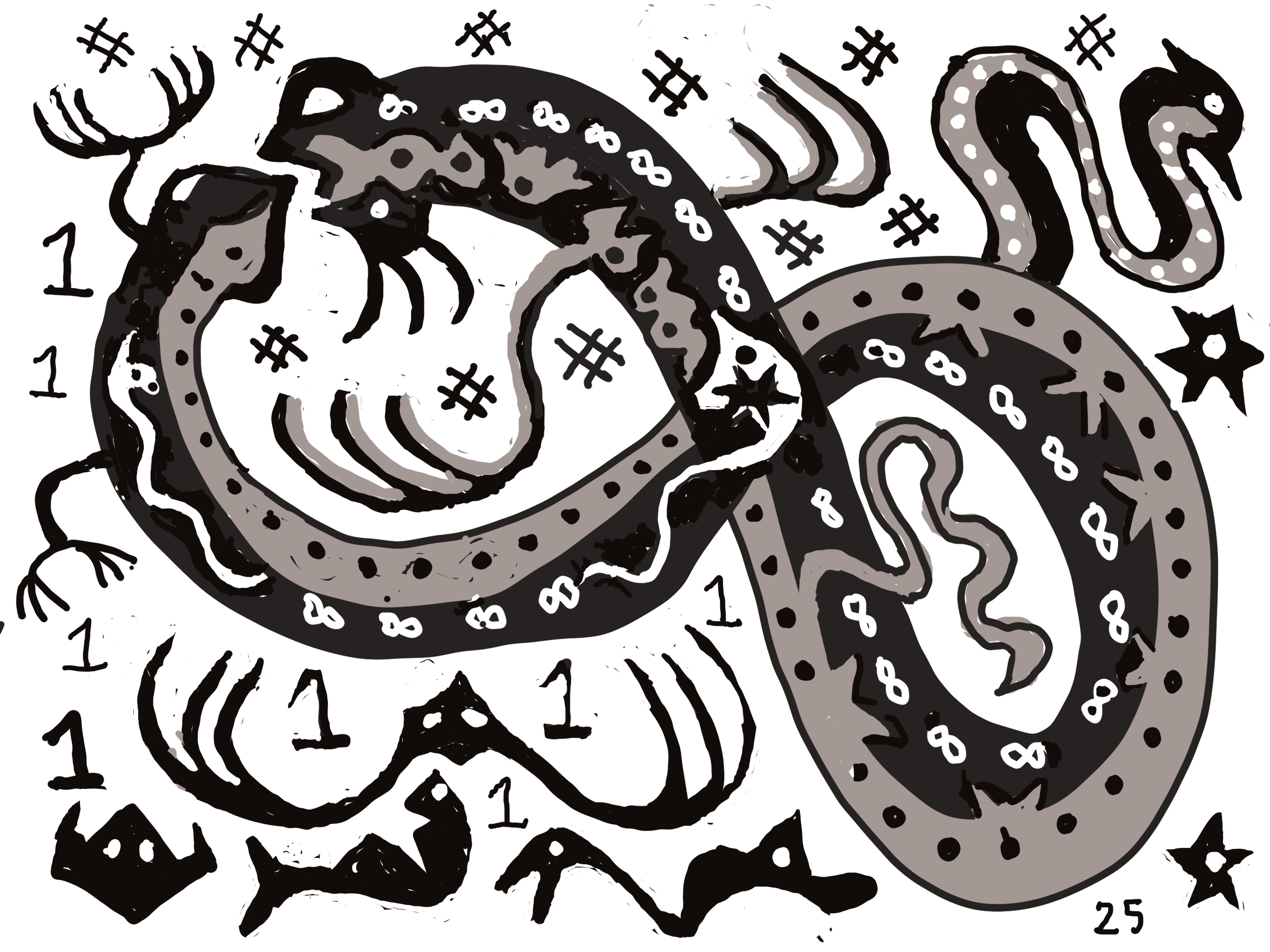The busy beaver problem#
Let \(BB(n)\) be the largest number of 1s produced by any 1#-program with at most \(n\) instructions
which halts properly on all empty registers. Notice that \(BB\) is well-defined and total. The main point is that \(BB\) is not computable.
Theorem 14
There is no program \(\mathtt{beaver}\) such that for all \(n\)
Proof. We are going to prove this two ways. Our first proof uses the Recursion Theorem in the guise of reflective \(\onesharp\).

Suppose that we had a program \(\mathtt{beaver}\) as described above. Let \(p\) be a program which writes itself to R1, then takes it length (its number of instructions), applies \(\mathtt{beaver}\), and finally adds a \(\onett\) at the end. Thus
But by definition of \(BB\), for all programs \(r\), if \([\![ r ]\!](\ ) \simeq \mathtt{1}^k\), then \(k \leq BB(|r|)\). Taking \(r\) to be \(p\), we see that
and this is a contradiction. So there can be no program \(\mathtt{beaver}\).
Proof. Here is a second proof. Suppose that the \(\one\hash\) program \(\mathtt{beaver}\) computed \(BB\) as above.
Let \(\mathtt{square}\) be a \(\one\hash\) program to compute \(n \to n^2\), using unary notation.
Consider the programs \(p_{n}\) for \(n\in N\), given by
Then \([\![ p_n]\!](\ )\simeq \onett^K\), where \(K = BB(n^2) + 1\).
Notice that the number of instructions in \(p_n\) is linear in \(n\). In fact, it is \(n + m +1\), where \(m\) is the total number of instructions in \(\mathtt{square}\) and \(\mathtt{beaver}\).
Let \(N\) be large enough so that \(N^2 > N+m+1\). Then by definition of \(p_N\),
On the left above, we mean the number of symbols in \([\![ p_N]\!](\ )\).
The number of instructions in \(p_N\) is \(N+m +1 < N^2\). So by definition of \(BB\), \(BB(N^2)\) is at least \(|[\![ q]\!](\ )|\), for any program of length \(\leq N^2\) which happens to produce an output which is all \(1\)’s. And \(p_N\) is one such program. Hence we also have
This is a contradiction!
Exercise 101
Our first proof did not exactly prove that \(\onehash\) has no program \(\mathtt{beaver}\) (It showed that reflective \(\onehash\) has no such program.) How would we change the argument to get that result? (There are several ways to do this.)
Exercise 102
Show that there is no total computable function \(f\colon\N\to\N\) such that for all \(m\), \(f(m) \geq BB(m)\).
Exercise 103
A common estimate for the number of atoms in the universe is \(M = 10^{82}\). Show that \(BB(50) > M\).
Exercise 104
We defined \(BB(n)\) using 1# programs with at most \(n\) instructions. How would things change if we defined \(BB(n)\) using programs with at most \(n\) symbols?
